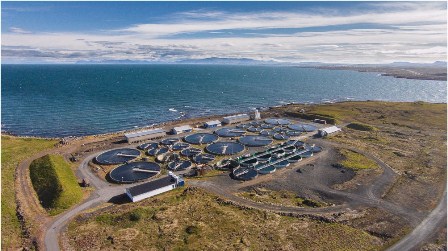A fish-first approach to enjoying seafood
Seafoods vary widely in their environmental impact. By knowing where different options come from and what to look for, you can make seafood choices that are good for your tastebuds and for the planet.
Buying fish for dinner got more complicated once it became public knowledge how many species are being overfished. About 90 percent of the world’s fisheries have either hit the maximum sustainable limit or are currently being overfished, according to a recent FAO report. Once-plentiful populations of fish include rockfish, salmon, swordfish, and cod, and Pacific bluefin tuna is at four percent of its peak breeding population size. Complicating all this is that up to 30 percent of seafood imports are estimated to be illegal or unreported.
So what’s a conscientious eater to do?
Reserve seafood that’s higher up on the food chain for special occasions. Big predatory fish, such as swordfish, tuna, shark and salmon (exceptions noted below), are less abundant and take longer to grow, which makes them more vulnerable to overfishing. Their fat stores also absorb more mercury and toxins over the years, which ends up in your dinner.
Go with seafood that grows and reproduces fairly quickly, which includes smaller species like clams, oysters, anchovies, and sardines. Other sustainable options include wild salmon from Alaska and smaller albacore tuna from the Pacific Northwest and British Columbia, which are both relatively well-managed fisheries
Arctic char farms use tank systems such as these to raise healthy, sustainable fish as an alternative to farmed Atlantic salmon or overfished species. Photo from Samherji Farms
Consider fish that’s farmed sustainably. Sometimes farmed fish is the eco-friendly option. Farming fish can help avoid depleting our natural fish populations, which are truly the last major source of wild food. Arctic char is one example of how this can work. Raised in land-based tank systems that recirculate water, the potential for water pollution is low and the char get a high quality habitat.
Other species with potential for sustainable aquaculture include catfish and tilapia, which eat plant-based feed and thrive in closed freshwater systems. What you want to avoid are Atlantic salmon that have been raised in net pens, which can pollute the water, promote disease, and harm fish.
Ask how your fish was caught. A common, and very destructive, form of fishing is called by-catch, whereby massive amounts of other species are caught in the process of looking for one specific type of fish. Wasting a food source is an issue all on its own. But by-catch also includes dolphins, sea turtles, and other endangered or vulnerable wildlife.
Bycatch is particularly extreme with bottom trawling, a fishing practice that drags a net along the ocean floor and catches anything that happens to be in the water. So ask at restaurants and fish stores how the fish was caught. More sustainable methods include hook-and-line fishing, pots, and smaller nets. Even if they can’t give you the answer you’ve at least established consumer interest in better practices simply by asking.
Get your catch from a local fishery. A community supported fishery operates a lot like CSAs, or community supported agriculture. Members pay for a regular share of the harvest, which comes from the sea instead of the field. These community supported fisheries help promote better marine stewardship by focusing on more abundant seafood or supporting small-scale operations that adopt sustainable fishing practices. Even in the landlocked Midwest, companies like Sitka Salmon and Sea to Table are connecting consumers to environmentally-sound fishing.
The best seafood-finding guides
To introduce variety into your dinner plans, consult a good guide, which is one that takes into consideration your location, fishing practices, and the fish population. Here are our favorites.
Monterey Bay Aquarium’s Seafood Watch App. This is the most widely used seafood-finding app. The information is put together by a team of scientists, it’s consistently updated, and you can choose among three simple categories, “best choice,” “good alternative,” and “avoid.” The app also tells you about the restaurants near you that serve environmentally-friendly seafood. You can also print and fold a pocket-sized guide for your state.
Source: Monterey Bay Aquarium Seafood Watch
Environmental Defense Fund’s Seafood Selector Chart. Another handy guide, this one put together by a well-respected environmental organization. It makes clear one of the truths about fish, which is that sustainability often depends on where and how fish is caught. So the “eco-rating” for Atlantic or Farmed salmon raised in closed pens is higher, for instance, than for Atlantic or Farmed salmon grown in conventional net pens, which can promote disease and pollution.


